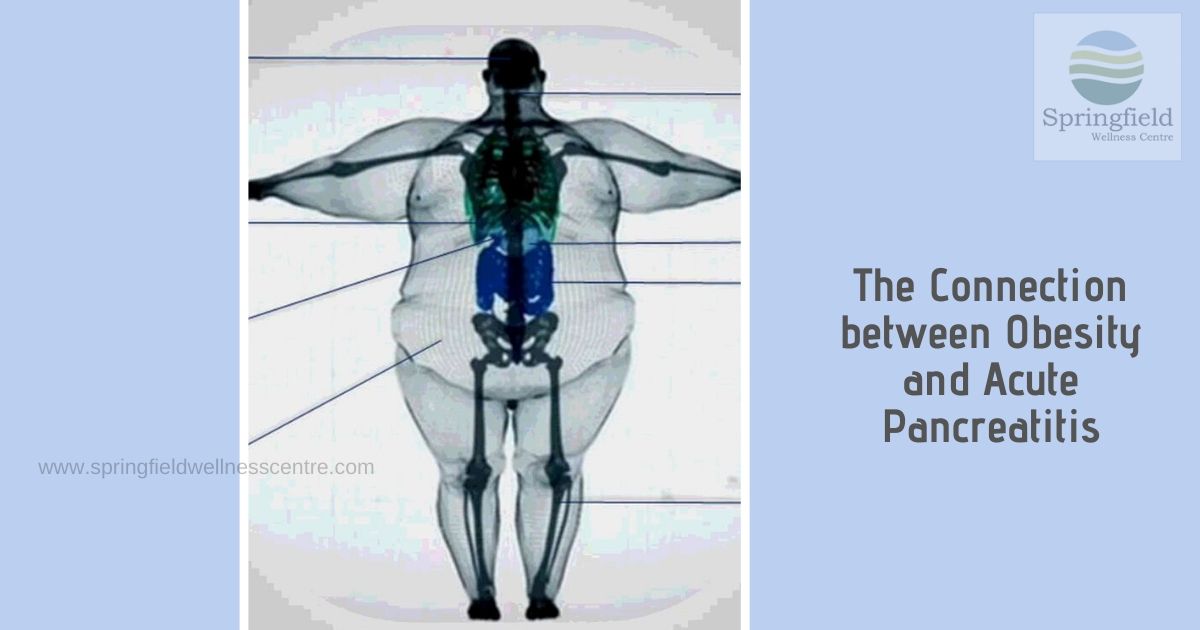The connection between obesity and acute pancreatitis
Obesity is a medical condition where excess body fat has accumulated in the body to an extent it can have adverse effects on our health. Obesity, as we all know, brings a wide spectrum of health risks such as cardiovascular diseases, diabetes, hypertension, gallstones, respiratory problems like sleep apnoea, asthma, etc, all termed as comorbid conditions or comorbidity. Added to the list of risk factors, obesity can also contribute to a common yet fatal condition known as acute pancreatitis. Here is more.
Pancreatitis is the inflammation of the pancreas. The primary causes of pancreatitis include alcohol consumption and gallstones. The pancreas is a small leaf-shaped organ that sits in the mid-upper abdomen, right behind the stomach. It plays an important role not only in digestion but also in metabolizing glucose which is an integral part of our life. The pancreas produces enzymes that break down the nutrients present in our food. As mentioned earlier alcohol consumption and gallstones are the causes of pancreatitis. And quite surprisingly obesity can cause gallstones too. In this blog, we are going to point out the connection between obesity and pancreatitis.
Obesity and Gallstones
Gallstones are hard substances that can form in your gallbladder. The gallbladder is responsible to store the excess bile produced by the liver for later use. Obese people usually tend to have high cholesterol content in their bile. So when bile, which aids digestion of fat, has too much fat content, it can alter the balance of cholesterol, and bile present in the gallbladder. Higher cholesterol concentration in the gallbladder can lead to the formation of cholesterol stones, one of the two types of gallstones, in the gallbladder.
How do gallstones cause acute pancreatitis?
In the presence of gallstones, these stones will travel from the gallbladder and into the bile ducts. Bile ducts are small tubes that drain into the small intestine. These gallstones can travel and block the opening of the pancreatic duct to the first part of the small intestine causing an obstruction. Sometimes it can also obstruct the opening of the bile duct into the small intestine. This obstruction in the pancreatic duct can cause obstruction of pancreatic juice flowing freely and this causes inflammation of the pancreas. This resulting inflammation is called gallstone pancreatitis. Some of the symptoms of gallstone pancreatitis include abdominal pain, nausea, vomiting, fever, weakness, fatigue, etc.
What is the treatment for acute pancreatitis?
The treatment for acute pancreatitis is largely based on its underlying cause. In this case, obstructing gallstones are the cause of acute pancreatitis. Hence the blocked regions need to be cleared and proper flow should be restored to resolve pancreatitis. The obstruction can be mild or severe and both the conditions need hospitalization and close monitoring. If the obstruction is mild, not eating and drinking a few days should resolve your condition. However, if the obstruction is severe, surgery is the only option. In this surgery, the obstruction is removed and alongside the gallbladder removal surgery is also performed.
The pancreas can also get affected in Obese without gallstones
- Obese people have visceral fat all over the internal organs. If the visceral fat occupies a higher % of fat in the body (over 3% of the body-weight), the visceral fat present near the pancreas is said to trigger pancreatitis.
In obese people, the white adiposities or white fat cells are very high in the viscera. In this, the level of triglycerides is also very high. This also is another factor that can cause pancreatitis.

